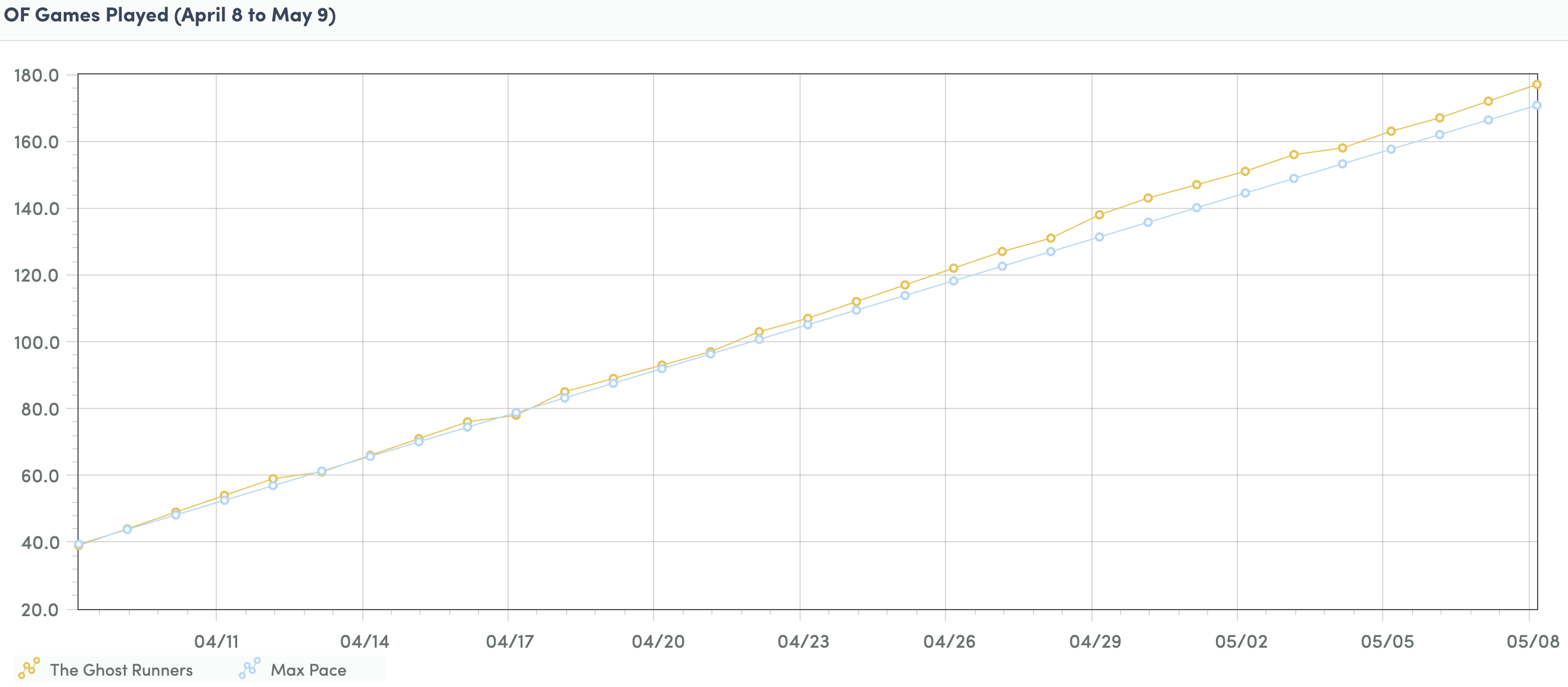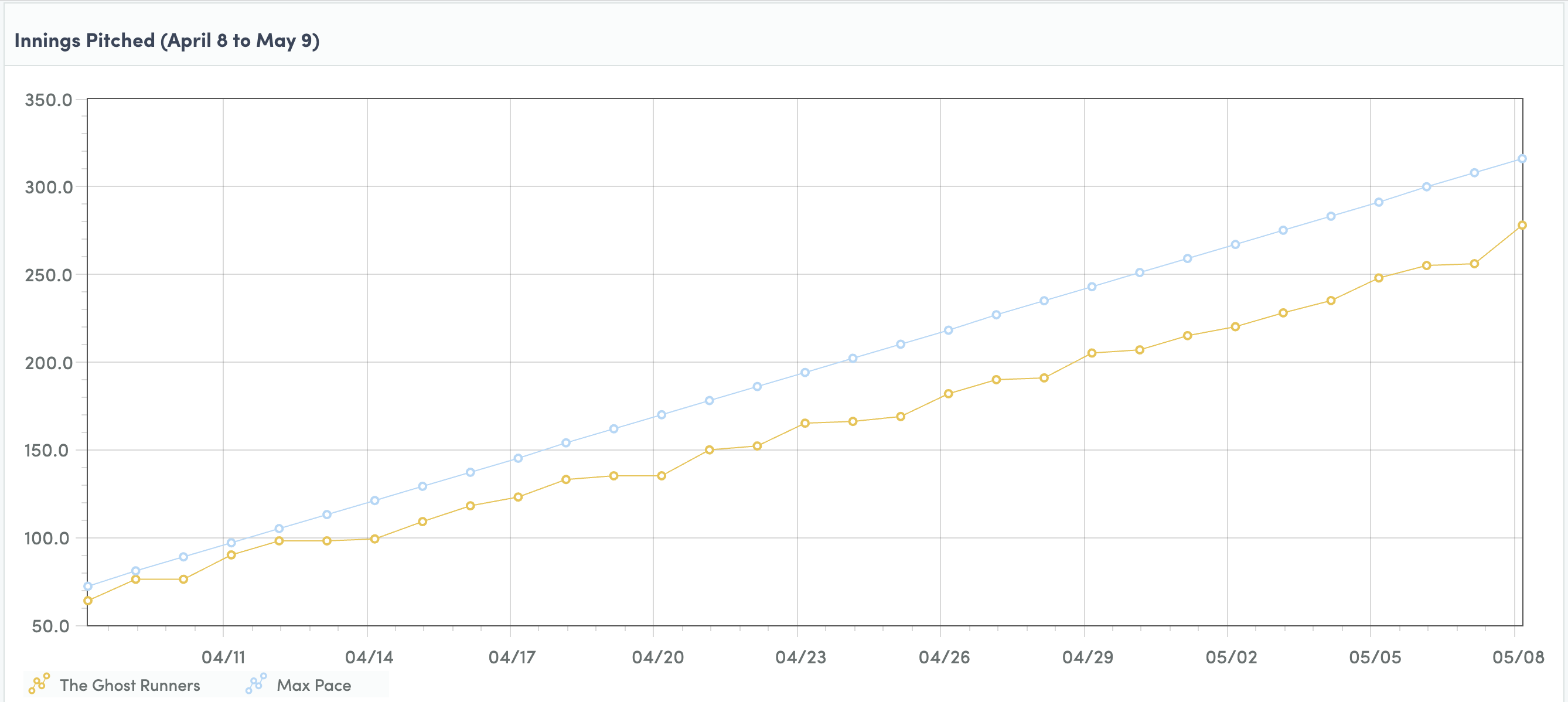Ottoneu Cold Right Now: May 15, 2023
Much like Hot Right Now, Cold Right Now will be a weekly Ottoneu feature with a focus on players who are being dropped or who maybe should be dropped in Ottoneu leagues. Hot Right Now will focus on players up for auction, players recently added, and players generally performing well. Cold Right Now will have parallel two of those three sections:
- Roster Cuts: Analysis of players with high cut% changes.
- Cold Performers: Players with a low P/G or P/IP in recent weeks.
There won’t be a corresponding section to Current Auctions because, well, there is nothing in cuts that correspond to current auctions.
Roster Cuts
Tyler Mahle, Leagues with a Cut (7 days) – 31.41%
Mahle’s injured elbow is going to require Tommy John surgery and it seems that many Ottonue managers are not interested in hanging on long-term. Mahle was off to a really nice start in his age-28 season but will be out of commission for the rest of the season and most of next.
Michael Brantley, Leagues with a Cut (7 days) – 17.31%
Sadly, Brantley has gone through some setbacks as a result of shoulder surgery forcing many Ottoneu managers to abandon their optimistic rostering of the 36-year-old outfielder.
Trevor Larnach, Leagues with a Cut (7 days) – 16.67%
Skip over this part if you recently dropped Larnach:
“RotoWire News: Larnach went 2-for-4 with a home run, a double, four RBI, one walk and two total runs scored in Sunday’s 16-3 win over the Cubs. (5/14/2023)”
Regardless, Larnach’s .167 vs. lefties may just have him platooning with any of the right-handed hitters on the Twins bench. In addition, Larnach really needs to improve his O-Contact%, Z-Contact%, and Contact% overall as they are all below league average. He’s striking out 34.1% of the time and that number is way too high.
José Leclerc, Leagues with a Cut (7 days) – 15.70%
It’s possible that some envisioned Leclerc fighting for a spot as a closer in Texas, but Will Smith has been holding down the position so far. Setup men Jonathan Hernández and Brock Burke stand in the way of Leclerc collecting holds and saves and Leclerc’s xERA of 4.86 is well above his actual ERA of 3.00. In addition, a .222 BABIP further suggests his 12 innings pitched have been supported by luck.
Jose Miranda, Leagues with a Cut (7 days) – 13.78%
After being sent back to AAA some managers are dropping Miranda. I don’t think it’s the right move given his young age and power potential. It’s possible that managers were too high on the youngster as his average price in Ottoneu points leagues is $6. Yes, he has been slumping but here’s a funky chart that gives some hope:
Miranda’s K% is decreased from last season, and his BB% is increased from last season, but all of his outcomes are declining. The point is, he’s showing skills improvements without the results. With Kyle Farmer the only man realistically playing 3B in Minnesota, you have to figure Miranda will be down in AAA for as long as it takes to get his bat going again. I like Miranda as a buy-low candidate at this point.
Cold Performers
Alek Thomas: 109 AB, .202/.261/.339, 2.4 P/G
Thomas continues to hold down the center-field position in Arizona, having played 37 games at the position this season, but that low .202 batting average is being brought down by struggles against left-handed pitchers. He’s hitting .280 against righties, but only .029, one hit in 34 at-bats, against southpaws. He’s right around league average when it comes to most of his plate discipline metrics, but he’s not producing at the plate. While he is a fast player, he only has three stolen bases this season in four attempts. Thomas needs to start getting on base for his value to increase.
Myles Straw: 127 AB, .228/.313/.268, 2.88 P/G
Here’s a busy chart that should explain a lot about Straw’s season:
His quick and hot start was fueled by patience, decent hitting, and luck. His wOBA is now going up thanks to an improvement in BB% after a slump, but BABIP and batting average are not following. Straw has come back down to earth.
Alek Manoah, 2.31 P/IP
Manoah’s four-seamer is his only pitch with an above-average swinging strike rate (SwStr%). His sinker, slider, and changeup are all below average on swinging strikes compared to major-league starters, leading to a career-low 16.8% K%. He’s using his changeup and slider more than ever yet they have produced negative pVals so far this year. Manoah doesn’t have a lefty/righty problem, his numbers are distributed somewhat evenly when facing batters from either side. The scary part is that his xERA of 6.30 is way higher than his actual ERA of 4.83. He may just need to work out his pitch mix and there’s hope when you look at how his BB% is coming down and his K% is going up:
Lance Lynn, 2.40 P/IP
Let’s start with the good stuff. A .364 BABIP, a 10.96 K/9, and a near two-point difference between ERA (7.51) and xERA (5.43), all point to a rebound. Now, the bad stuff. His 8.5% walk rate is the highest it’s been since 2018 and a 2.23 HR/9 is not helping his ERA. If we had to boil it down to an obvious and unhelpful sentence, perhaps, “He’s walking too many hitters and then giving up home runs”, would work. If you look at Lynn’s average velocity charts, all of his pitches are trending down:
But if you look closely you can see a game in April where he was really low and that one outing is dragging his season average down. Statcast is now identifying a sweeper that has been thrown five times in which opponents hit 1.000 against it. If you need more to be hopeful about, Lynn’s four-seamer, cutter, sinker, and curveball all have a swinging strike rate (PitcherList) above the league average for starting pitchers proving the reason for the high K/9 that Lynn has displayed.







